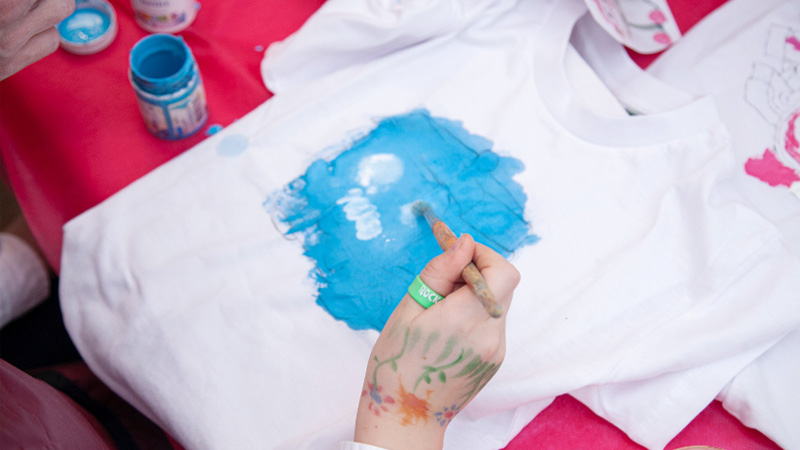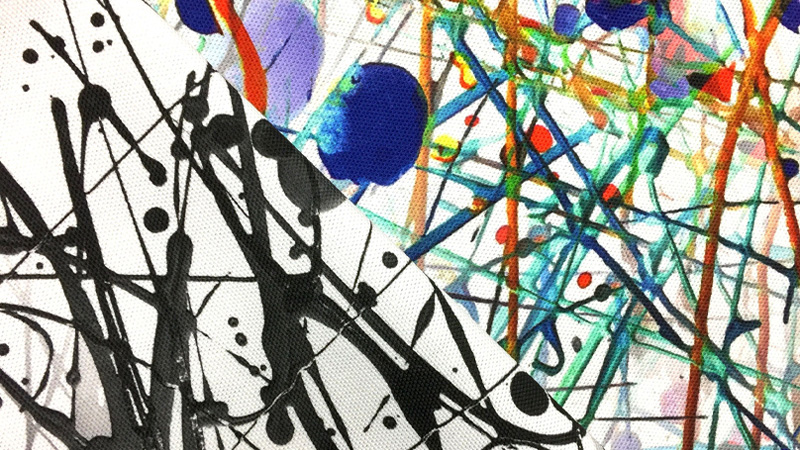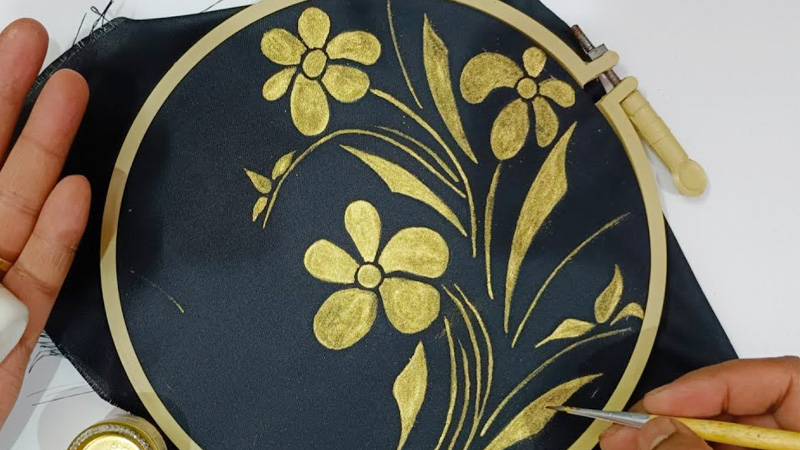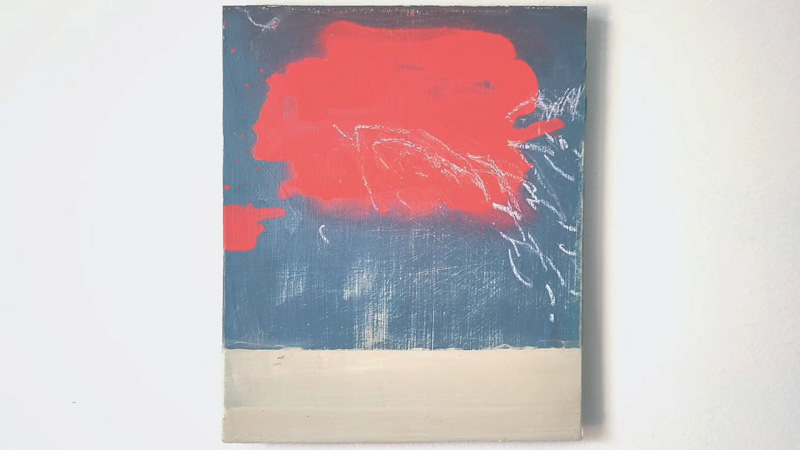Fabric painting is a creative and versatile way to add a personal touch to your clothing, home decor, or accessories. Whether you’re a seasoned artist or just exploring this craft, one common concern is the drying time of fabric paint.
Waiting for paint to dry can be a test of patience, especially when you’re eager to see the finished result. In this guide, we’ll delve into the factors that influence ‘how long does fabric paint take to dry – tips to dry quickly’.
We will provide you with valuable tips and techniques to expedite the drying process. By the end of this article, you’ll be equipped with the knowledge to create vibrant fabric art efficiently and without the frustrating wait. Let’s dive in and discover how to make your fabric paint dry in a flash!

How Long Does Fabric Paint Take to Dry – Tips to Dry Quickly
The drying time of fabric paint is a common concern for artists and crafters alike. Waiting for paint to dry can be a test of patience, especially when you’re eager to see the finished result of your creative endeavor.
In this comprehensive guide, we will delve into the various factors that influence how long fabric paint takes to dry and provide you with valuable tips and techniques to expedite the drying process.
Factors Affecting Fabric Paint Drying Time

Before we dive into the tips for speeding up the drying process, it’s essential to understand the factors that affect how long fabric paint takes to dry. These factors include:
Type of Fabric Paint
The specific formulation of the fabric paint you’re using plays a significant role in drying time. Acrylic-based fabric paints tend to dry faster than water-based ones. Paints labeled as “quick-dry” or “fast-drying” are designed for shorter drying times.
Application Thickness and Paint Composition
Some fabric paints contain additives or chemicals that affect drying time. Always refer to the manufacturer’s instructions for guidance on drying times for a particular paint.
The thickness or consistency of the paint layer you apply matters. Thicker layers take longer to dry than thin, even coats. If you want to speed up drying, consider applying your paint thinly and evenly.
Environmental Conditions
The surrounding environment can have a substantial impact on drying time. Here are some environmental factors to consider: Warmer temperatures generally promote faster drying.
Cooler temperatures can slow down the drying process. High humidity levels can extend drying times, as moisture in the air can hinder the paint from drying thoroughly.
Adequate airflow around your painted fabric can help facilitate faster drying. A well-ventilated space or the use of fans can improve air circulation.
Fabric Type and Ventilation
The type of fabric you’re painting on can affect drying time. Natural fabrics like cotton and linen tend to absorb paint more readily and may dry faster than synthetic fabrics, which can resist absorption.
Proper ventilation can help increase air circulation around your painted fabric. Good airflow can aid in drying the paint faster. Consider working in a well-ventilated area or using fans to enhance airflow.
Layering and Fixatives
If you’re applying multiple layers of paint or different colors, each layer should be allowed to dry fully before adding the next. Failure to do so can result in smudging or blending of colors.
Some fabric paints come with fixatives or fabric mediums that can be applied after painting to help set the color and speed up drying. These products may have their own specific drying times and instructions.
Heat and Ventilation
You can use gentle heat sources like a hairdryer set to a low, cool setting or an iron on low heat (with a pressing cloth) to speed up the drying process. Proper ventilation, whether through open windows or fans, can also assist in reducing drying time.
Patience
While there are ways to expedite drying, it’s essential to exercise patience. Rushing the drying process can lead to smudges, uneven drying, or other unwanted results. Allow the paint to dry naturally for the best outcome.
Understanding these factors and how they interact can help you manage and optimize the drying time of fabric paint for your specific projects.
By considering these variables, you can achieve the desired results while minimizing the wait for your fabric paint to dry.
Tips to Speed Up Fabric Paint Drying

Now that we understand the key factors at play let’s explore some practical tips to accelerate the drying of fabric paint.
Choose the Right Fabric Paint
Opt for fabric paints that are labeled as “fast-drying” or “quick-dry.” These paints are specifically designed to dry more rapidly than standard fabric paints. However, if you make the paint layers too thick, it will take more time to completely dry.
Thin Your Paint
Consider diluting your fabric paint with a fabric paint medium or water before application. Thinner layers dry more quickly. Be careful not to over-dilute, as this can affect the paint’s color and adhesion.
Use a Heat Source
Gentle heat can expedite the drying process. You can use a hairdryer on a low, cool setting to blow air over the painted fabric. Keep the dryer at a safe distance to prevent overheating or damaging the fabric.
Alternatively, an iron set to a low heat setting can be used with a pressing cloth to gently heat-set the paint.
Proper Ventilation and Medium
Work in a well-ventilated area to ensure good air circulation. If you’re working indoors, open windows and doors, or use fans to improve ventilation. This will help the paint dry faster.
Some fabric paints can be mixed with a fabric medium that not only enhances the paint’s flow but also aids in drying. Check the product label for compatibility and instructions.
Heat-Set the Paint
After the paint has dried for a while, heat-set it using an iron. Place a pressing cloth over the painted area and iron it for a brief time on a low heat setting. This helps to lock in the colors and accelerates drying.
Apply fabric paint in thin, even layers. Thicker paint applications take longer to dry, so a light touch can significantly reduce drying time.
Natural Light
If possible, place your painted fabric in natural sunlight. Sunlight can help speed up drying, especially on warm and sunny days.
While these tips can significantly reduce drying time, it’s important to exercise patience. Rushing the drying process can lead to smudging or uneven results. Allow your fabric paint to dry naturally for the best outcome.
Additional Considerations
Here are a few more things to keep in mind when working with fabric paint: Before starting your main project, it’s a good idea to test your fabric paint on a small, inconspicuous area of the fabric to ensure compatibility and to get a sense of how it will dry.
If your design requires multiple layers of paint, make sure each layer is fully dry before adding the next. This prevents colors from blending unintentionally.
Some fabric paints come with fixatives that can be applied after painting to help set the color and speed up drying. Check the instructions on your paint’s packaging. Always follow the manufacturer’s instructions on the fabric paint label for the best results.
What Paint Dries the Fastest?

When it comes to paint, the drying time can vary depending on several factors, including the type of paint and the conditions in which it is applied. However, there are a few types of paint that are generally known to dry faster than others.
Acrylic Paint
One such type is acrylic paint. Acrylic paint is water-based and dries relatively quickly compared to other types of paint. It typically dries to the touch within 20 to 30 minutes, although it may take longer to fully cure.
Acrylic paint is popular among artists and DIY enthusiasts because of its fast drying time, which allows for quicker layering and faster completion of projects.
Spray Paint
Another type of paint that dries quickly is spray paint. Spray paint is designed to dry rapidly, allowing for a smooth and even finish. It is commonly used for painting large surfaces or objects, such as furniture or automotive parts.
Spray paint can dry to the touch within minutes, but it is important to note that multiple coats may be required for full coverage.
Some Oil-Based Paint
In addition to acrylic and spray paint, some oil-based paints also dry relatively quickly. Oil-based paints contain solvents that evaporate during the drying process, which helps speed up the drying time.
However, it is worth mentioning that oil-based paints generally take longer to dry compared to acrylic or spray paint. It is important to consider that drying time can be influenced by various factors, such as temperature, humidity, and thickness of the paint layer.
Higher temperatures and lower humidity levels can accelerate the drying process, while cooler temperatures and higher humidity can slow it down.
FAQs
Can I use an iron to dry fabric paint faster?
Yes, using an iron can help accelerate the drying of fabric paint. After allowing the paint to air dry for a short period, you can place a clean cloth or parchment paper over the painted area and iron it on a low heat setting. The heat from the iron will help set the paint.
Does the type of fabric affect the drying time of fabric paint?
Yes, the type of fabric can influence the drying time of fabric paint. Porous fabrics, such as cotton or linen, tend to absorb the paint more quickly, allowing for faster drying.
On the other hand, synthetic fabrics like polyester or nylon may take longer to dry as they are less absorbent.
How long should I wait before washing fabric painted with fabric paint?
To ensure the longevity of your fabric paint design, it is recommended to wait at least 24 hours before washing the painted fabric. This allows the paint to fully cure and adhere to the fabric fibers. Some fabric paints may require a longer curing time.
Can I speed up the drying time of fabric paint by using a fan or dehumidifier?
Yes, using a fan or dehumidifier can help accelerate the drying time of fabric paint. By increasing air circulation and reducing humidity, these devices can help evaporate the moisture from the paint more quickly.
Are there any fabric paints specifically designed for quick drying?
Yes, there are fabric paints available in the market that are formulated to dry more quickly than traditional fabric paints. These quick-drying fabric paints often contain additives or solvents that help speed up the drying process.
Conclusion
Understanding how long fabric paint takes to dry and mastering techniques to speed up the drying process can be a game-changer for your creative projects.
The drying time of fabric paint depends on several factors, including the type of paint used, the thickness of the application, and environmental conditions like temperature and humidity.
By choosing the right type of paint, applying it in thin layers, utilizing heat sources cautiously, ensuring proper ventilation, and exercising patience, you can achieve quicker drying times without compromising the quality of your artwork.
So, the next time you’re eager to unveil your masterpiece, remember these tips and enjoy the satisfaction of watching your fabric paint dry efficiently.
With practice and a touch of creativity, your fabric art endeavors are bound to flourish, and you’ll spend less time waiting and more time admiring your vibrant creations.
Leave a Reply